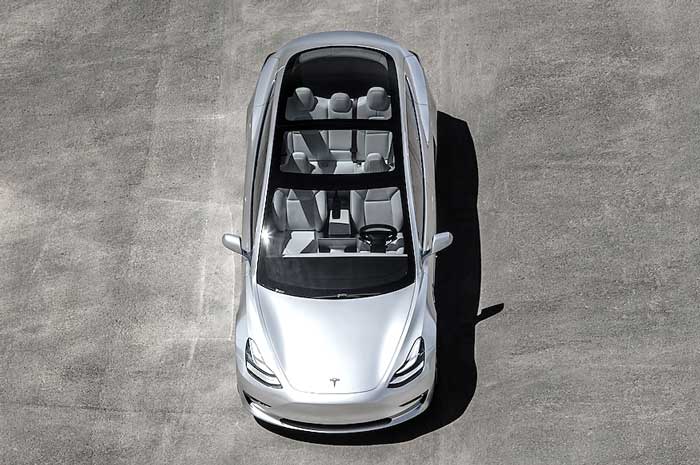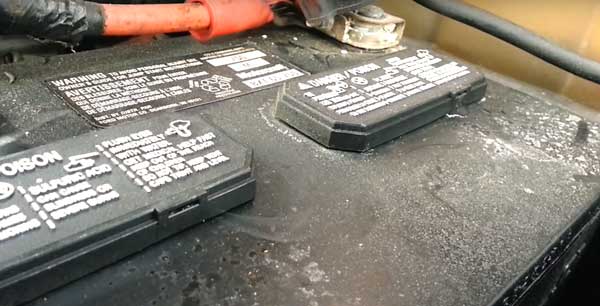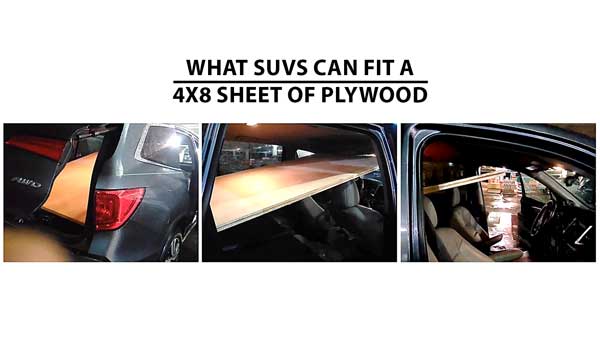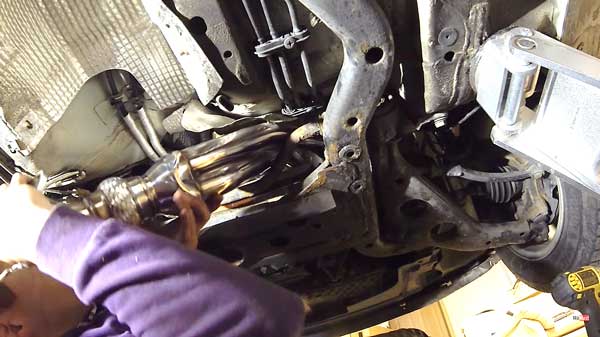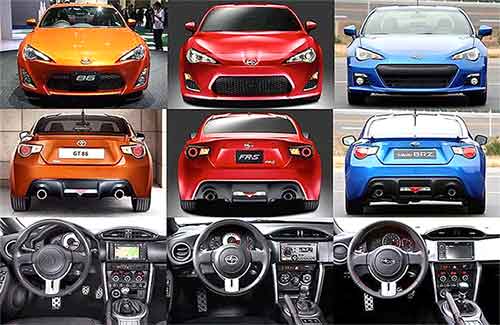The Importance of Wheel Alignment After Replacing Ball Joints: A Comprehensive Guide
Do you need an alignment after replacing ball joints? Your car’s suspension system is a carefully designed assembly that organizes stability, control, and safety on your journey. The system has a circular joint in the middle, making it easy to assemble the support and wheels. Due to continuous use, exposure to road conditions, and inevitable wear and tear, these round joints gradually wear out and replacement is often necessary, however, if a major component consideration arises after changing these important factors: the need to align the wheels.

Photo: Wheel alignment checking
Because ball joints strongly influence the installation system, replacing them can significantly affect wheel alignment. Altered spherical cells can cause wheel positioning to deviate, affecting tire wear, steering response, and overall vehicle stability. Despite the direct relationship between ball joints and alignment, their replacement does not inherently imply alignment. However, tactful driving often means checking alignment or replacing or replacing ball joints.
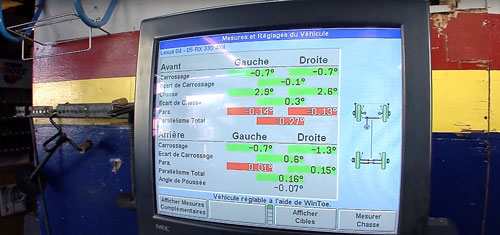
Photo: Measuring wheel alignment
Neglecting alignment assessment after ball joint replacement risks compromising steering accuracy, tire longevity, and overall driving safety. It is therefore advisable to consult with a qualified mechanic or follow the vehicle manufacturer’s recommendations for replacing a rear-mounted round joint to ensure proper operation and safety on the road.
Understanding Ball Joints and Their Function
Ball joints play an important role in the complex mechanics of a vehicle’s front suspension, acting as important connectors that facilitate smooth movement and rotation between components of the suspension These circular bearings are important links in the steering system, essentially driving the wheels in any controlled direction. While allowing for vertical mounting they ensure that the wheels can steer through undulating areas while maintaining firm contact with the suspension framework.
The key is to allow the wheels to express themselves up and down, accommodate road irregularities, and help provide a comfortable driving experience by reducing vibration and vibration Also, ball joints are essential for steering precision, to allow the driver to steer properly. This function ensures wheel alignment, and supports responsive handling and safe steering.
Because of their vital role, it is significant to keep ball joints in optimum condition. Over time, wear and tear can compromise efficiency, leading to issues such as excessive play, tire misalignment, and poor steering control to ensure vehicle safety and performance the job requires regular inspection and timely replacement, emphasizing the system importance of these seemingly small but important items in a car.
Signs of Worn Ball Joints
Vital components on a suspension vehicle exhibit round joints and deteriorate over time. Signs of ball joint wear are critical to vehicle safety and performance. The symptoms of ball joint damage are multidimensional:
- Rumbling noise: A primary symptom appears as a loud audible or banging noise coming from the front when moving over broken surfaces or turning This audible symptom usually indicates compromised ball joint integrity.
- Steering problems: A noticeable reduction in steering power or a smooth wear in the steering wheel may indicate ball joint damage This loss of steering response requires immediate attention.
- Tire irregularities: Worn round joints can severely affect tire health, causing irregular and premature wear and tear. The resulting asymmetric shoes can pose a safety hazard and cause driving confusion.
- Vibration: A visible vibration by the steering wheel or felt in the chassis, especially at high speeds, is another indication of a damaged round joint This vibration indicates that it may not be able to withstand the design of stop in the car.
Understanding these symptoms allows vehicle owners to quickly address ball joint issues, ensuring proper vehicle performance, safety, and longevity of components Regular and timely inspection replacement is necessary to maintain the overall health of the car and ensure its optimum performance on the road.
Replacing Ball Joints
Replacing worn or damaged round joints is an important part of vehicle safety and performance. If these vital components show signs of wear or malfunction, they need to be replaced immediately. Promptly dealing with damaged ball joints is key to the performance and stability of a vehicle suspension.
Ball joint replacement usually involves removal of debris, making sure to eliminate any potential hazards or degraded performance Created a new set of joints to restore the vehicle’s suspension the system is the same, giving the car higher capacity, stability, and overall performance.
Neglecting to replace a worn round joint can have serious consequences, such as poor steering control, tire misalignment, possible suspension problems, and replacement on time, not only eliminates these risks but also helps in prolonging the life of the car parts without further damaging the environment.
Professional knowledge or technical skills are often recommended for this task, ensuring accuracy and compliance with safety procedures during ball replacement Regular inspection and maintenance of ball joints is recommended for telltale signs that it has deteriorated early and that potential problems have been actively addressed before they become serious.
Alignment and Ball Joint Replacement
Wheel alignment is the most important step after replacing a ball joint in a car’s suspension system. This important process improves the efficiency and performance of the car. Here’s why wheel alignment is important for replacing a ball joint:
- Suspension geometry disruption: The process of changing the round joint requires the disassembly of various suspension elements, these elements are destroyed in a symmetrical order Although the focus is on replacing the ball joint, to disassemble the suspension components and reattachment can significantly change the suspension geometry
- Effect on wheel components: The alignment of the wheels revolves around changing the wheel angle to maintain stability and parallel with each other on the ground. When a round joint is changed, adjustments to suspensions can directly affect these parts, potentially causing misalignment issues.
- Tire storage and use: Improper wheel alignment also leads to tire wear, resulting in consistent and positive tire contact with the road surface Bad wheels prevent tire wear, resulting in wasted fuel consumption efficiency decreases, maintainability, traffic and safety problems arise
- Steering stability and control: Improperly adjusted spherical steering may cause steering instability, making it difficult to control the vehicle safely This instability presents a safety hazard, especially when they are working suddenly or immediately, where precise control of the car is important.
- Improved safety and performance: Proper wheel placement not only ensures safety but also contributes to the overall performance of the car. Proper alignment improves tire handling, stability and durability, and provides a safe and efficient driving experience.
- Professional expertise: Requiring a certified technician for installation work ensures that precision adjustments are made to the suspension and wheel components, conforming to the manufacturer systems for efficient and safe operation of the car
Ensuring wheel alignment after ball joint replacement is essential to ensure vehicle safety, stability and on-road performance, for a smooth and safe driving experience while preserving suspension system and tire integrity in holding so.
The Alignment Process
Wheel alignment is an important process that requires careful measurement and adjustment to ensure smooth and safe operation of the car. The alignment process primarily focuses on three main components: camber, caster, and toe, each of which plays an important role in maintaining tire health, stability and steering accuracy.
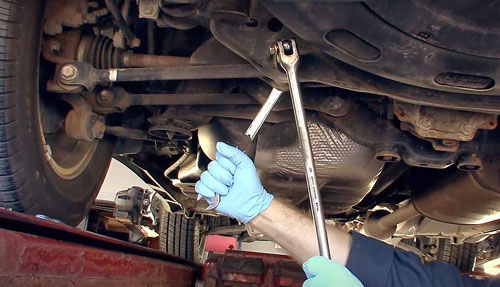
Camber:
- Displays the rotation of the wheel relative to the view of the front of the car—shows whether it is rotating inwards or outwards.
- Proper camber alignment is essential for tire wear and stability during vehicle handling.
- Proper camber fine-tuning ensures that all tire treads maintain contact with the road exterior, preventing uneven wear.
Caster:
- The caster angle is viewed from the side of the car to determine the angle of the steering pivot.
- This angle greatly affects the stability and recovery of the steering wheel.
- Proper caster placement enhances vehicle steering response, resulting in better handling and better handling on the road.
Thumb:
- Toe alignment is the angle at which the tire points inwards or inwards when viewed from above.
- Improper toe alignment can cause extreme tire wear, poor performance and stability, affecting the overall performance of the car.
- Correct toe adjustment keeps the wheels in line with each other and the center of the car, resulting in straight-line stability and tire wear.
The Importance of Alignment:
- Increases tire life by preventing uneven wear on all tires.
- Improves vehicle handling, steering response and overall driving enjoyment.
- Ensures safety by maintaining proper tire and road surface contact.
- Prevents premature wear of hangers, reducing the need for costly repairs.
Regular alignment inspections and adjustments are key to improving vehicle performance, ensuring safety, and extending the life of critical tires and supports If you are the mechanic professional consideration for regular installation can have significant benefits for the overall health and performance of the car.
Seeking Professional Assistance
The idea of replacing the round joints of your car and leaving the wheel alignment seems to make sense. However, opting for professional help in this regard is not just a suggestion but an important step towards ensuring the best performance of your car. Entrusting this task to an experienced mechanic with special tools and knowledge can greatly benefit the performance and safety of your vehicle.
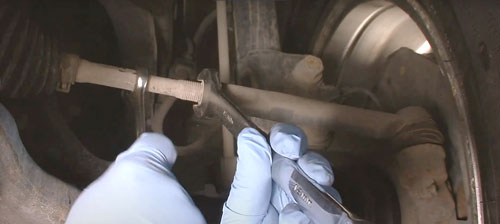
A qualified mechanic has the skills to check the alignment of your vehicle. They use precision tools to assess and optimize a matching maintenance system, restoring your vehicle’s capabilities in an efficient manner. These careful changes not only enhance driving comfort, but also play an important role in ensuring your safety on the road.
Neglected wheel alignment practices after ball joint replacement can be serious. Tire misalignment, one of the major issues caused by ill-fitting wheels, not only reduces tire longevity, but also poses a safety hazard while traveling If used properly due to misalignment a, can challenge steering control and efficiency, putting the driver and passenger at risk.
As a result, it’s a smart investment to include matching wheels in your routine maintenance. Protects against potential hazards from mismatched wheels after ball joint replacement. Actively addressing this aspect goes a long way in improving the overall performance of your vehicle, extending its life, enhancing the safety features and providing a smooth driving experience.
So, do you need alignment after replacing the round joint? Yes, after all, deciding to seek professional help for wheel alignment after replacing ball joints is a responsible choice that bets on the longevity of your vehicle and the safety of everyone on the road read.

